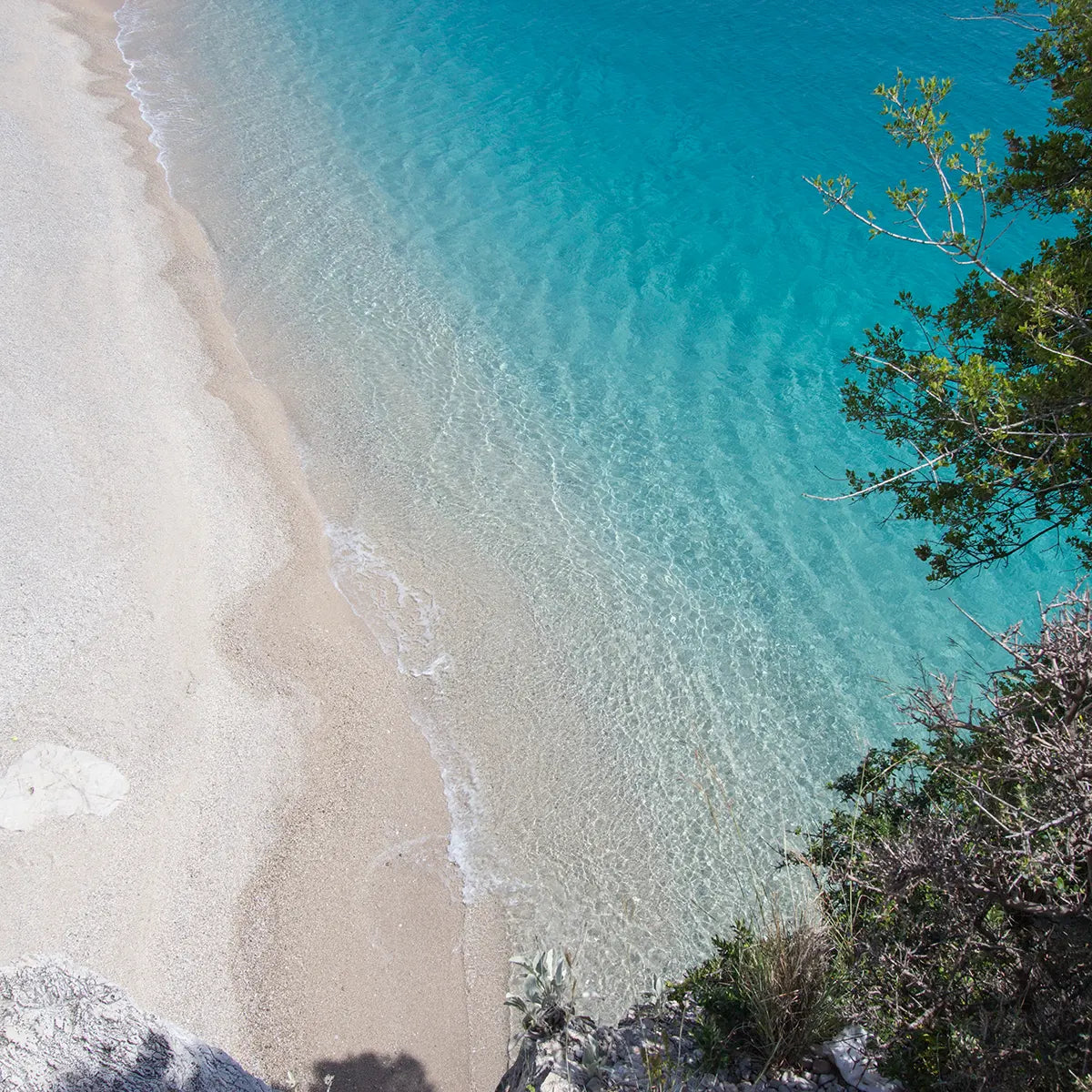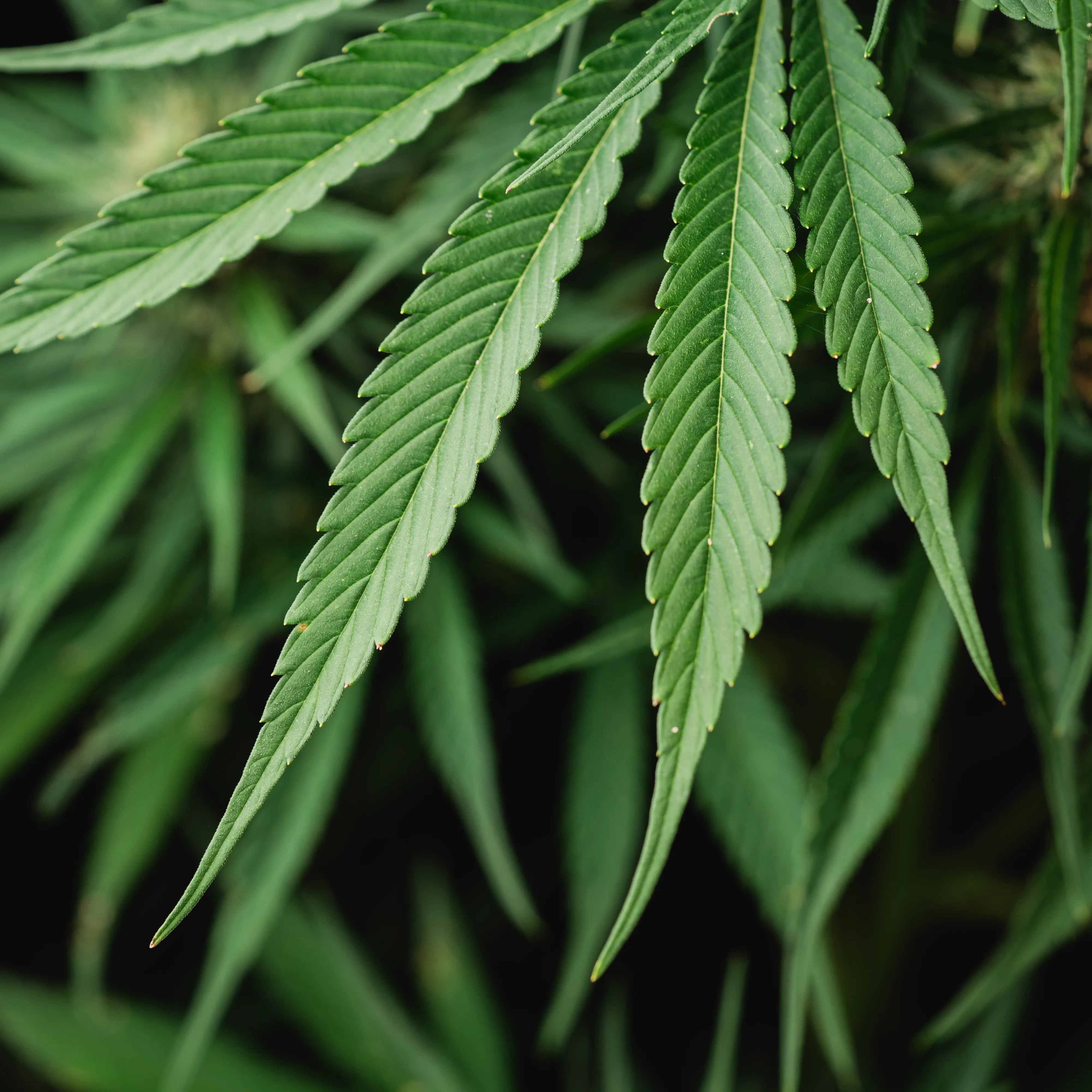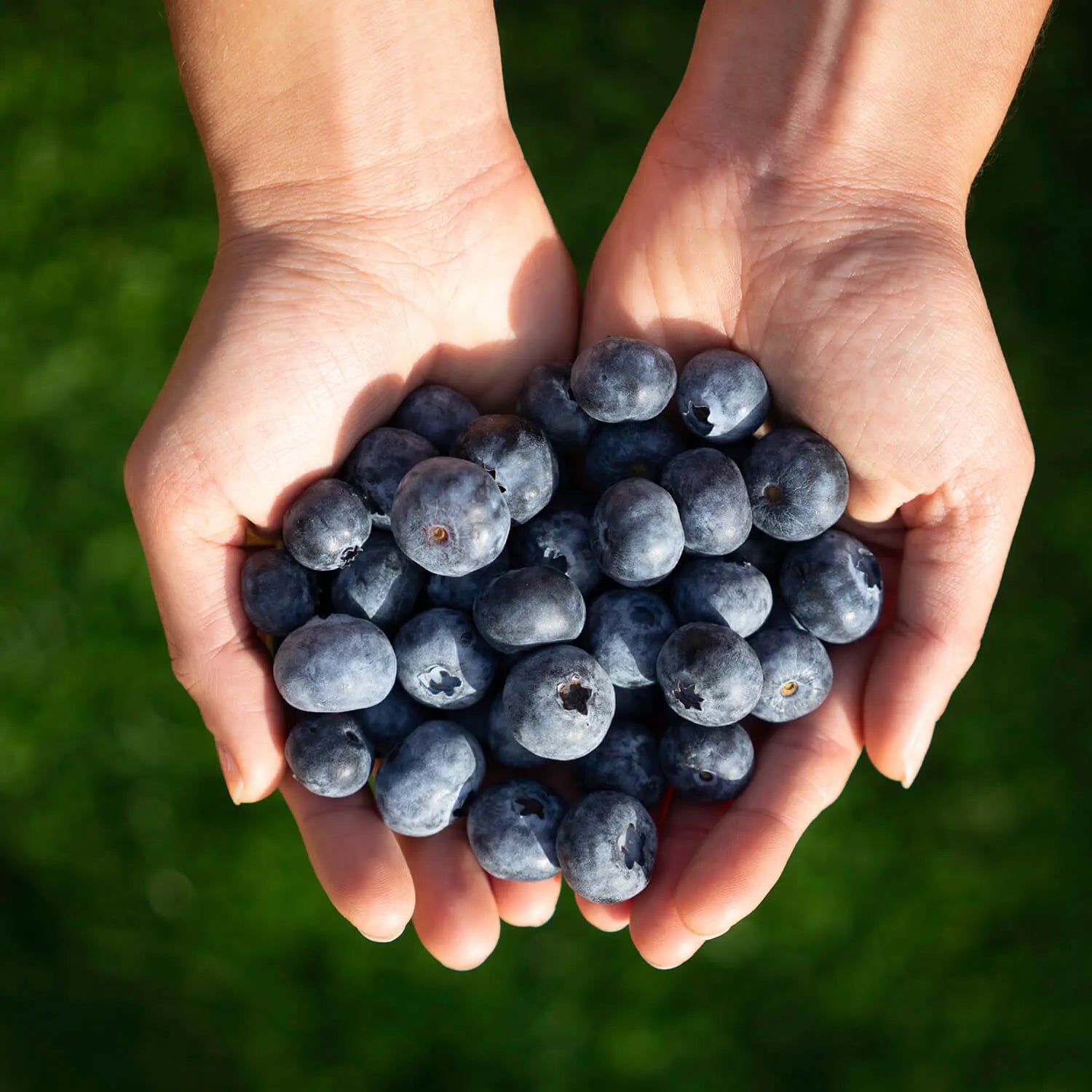
Microplastics in Cosmetics – Invisible and Dangerous
Microplastics in Cosmetics and the Environment
Petroleum-based plastics of microscopic size are still hidden in many shampoos, conditioners, shower gels, but also in peelings and skin creams. The solid, liquid or waxy plastic particles serve as an abrasive or binding agent as well as a cheap filler. They are intended to give the product its typical consistency, color and smoothness.
The problem: Due to their small size, microplastics cannot be completely filtered out of the water by sewage treatment plants. They end up in farmland, rivers and oceans via wastewater. There, the particles attract other pollutants like a magnet, are eaten by marine life and accumulate in their organisms. This is how microplastics destroy our ecosystem and end up on our plates via the food chain. Plastic is hardly biodegradable and decomposition often takes hundreds of years. According to a 2018 study by the Fraunhofer Institute, an estimated 330,000 tons of microplastics are released into water, soil and air in Germany alone every year.
Harmful Effects of Microplastics on the Human Body
Microplastics are toxic to cells. Current research shows that microplastic particles penetrate cells within 24 hours of exposure and accumulate primarily near the cell nuclei. Cell damage and even cell death increases with increasing amounts of microplastics and exposure time. Scientists have detected microplastics in various human organs such as the placenta, lungs, heart, spleen, liver and also in the brain (Environ Int January 2021, 146: 106274). In the brain, the microplastic particles can promote inflammation, neurological disorders or diseases such as Alzheimer's.
What is microplastic?
Microplastics are small plastic particles or polymers that are smaller than five millimeters. A distinction is made between primary and secondary microplastics. Primary microplastics are manufactured industrially in the form of granules as a raw material for plastic products. Secondary microplastics are created by the disintegration and abrasion of larger plastic parts, such as those from packaging and bags, in the environment.
Detecting Microplastics in Cosmetics
To help you identify and avoid microplastics in cosmetics, you can scan the ingredients of your skin and hair care products with the Codecheck app. Greenpeace also offers a checklist of no-go ingredients for download:
- Acrylate Copolymer (AC)
- Acrylate Crosspolymer (ACS)
- Dimethiconol
- Methicone
- Polyamides (PA, Nylon)
- polyacrylates (PA)
- Polymethyl methacrylate (PMMA)
- Polyquaternium (PQ)
- Polyethylene (PE)
- Polyethylene glycol (PEG)
- Polyethylene terephthalate (PET)
- Polypropylene (PP)
- Polypropylene glycol (PPG)
- Polystyrene (PS)
- Polyurethane (PUR)
- siloxanes
- Silsesquioxane
No microplastics in our myrto products

You are guaranteed not to find any microplastics in any of our myrto products - of course as a matter of principle and because this is not allowed in natural cosmetics. Instead, we use sun-dried mineral clay as a natural and gentle peeling agent in myrto facial care. As an environmentally friendly alternative to polymers such as silicone oils in hair care, you will find highly effective organic plant extracts from CO2 extraction, proteins from grains, betaines from sugar molasses or beta-glucan from oats to strengthen hair at myrto.
The same applies to packaging: as reduced as possible
Our belief in sustainability is also reflected in the production and packaging of myrto natural cosmetics: We fill as many products as possible in glass bottles and glass jars. The only exception is the microbially particularly sensitive facial creams, which are packaged in recycled PP airless dispensers. All packaging is made in Germany or Austria. Our suppliers are preferably small companies and come from the region.
Environmentally friendly grass paper is used in our recycled shipping boxes with plastic-free padding material: only 2 liters of water are needed for one ton of grass paper, whereas 6,000 liters are needed for normal paper. In our factory, we rely 100% on renewable energies, reduce our paper consumption as much as possible and consistently avoid completely unnecessary packaging for myrto products.
topic of bioplastics
Although we are eagerly waiting for it: Unfortunately, there are still no suitable packaging bottles made of purely plant-based bioplastics that decompose naturally and within a reasonable time in the environment. There are attempts by the industry to produce biodegradable plastics with sugar cane, cellulose or corn components, which are in principle biodegradable and compostable. However, the plant-based content of such packaging is currently only a few percent - the rest is of petrochemical origin. Airless dispensers in particular cannot currently be produced as an alternative; this is still in the planning stage. As of today, there is no approval for this under EU law - neither for food nor for cosmetics. Currently available bioplastic packaging should be viewed as a pure marketing measure.
plastic packaging made from recycled materials
In addition, there are increasingly recycled plastics, so-called recyclates for packaging. Especially in view of the ever scarcer raw materials and a climate-neutral circular economy, the conversion or at least the co-use of recyclates could be an option. However, the key prerequisite for the sufficient and long-term availability of recyclates is the separate collection of recyclable materials from private households or leftovers from the plastics industry. The landfilling or "thermal recycling" of plastic waste would have to be banned.
The demand for recyclates is currently very high, because the use of recycled plastic to produce packaging material reduces the use of fossil raw materials and at the same time lowers energy requirements. However, a flawless appearance is usually not achievable with the use of recyclates. Small inclusions can be visible or the color of a package varies depending on the recyclate used. Safety standards for the use of recyclates in the cosmetics sector are to be defined by 2023. The high standards for food quality are not to apply, but rather a weaker standard that should still offer sufficient consumer protection.
environmental protection projects that we support
Even though there is certainly still room for improvement, we try to limit environmental damage in our own environment as best as possible and to do our part to ensure that nature can regenerate. We support environmental protection projects run by BUND and NABU with regular donations for the preservation and renaturation of native forests, for the protection of ecological moorland areas and for rescue measures for the biodiversity of native birds such as the skylark, lapwing and robin.



